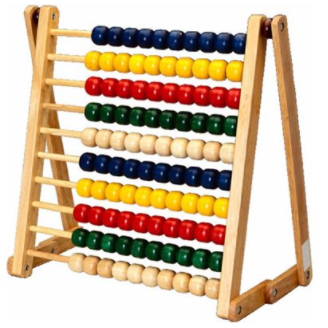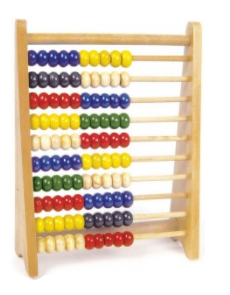Navigating numbers
You have certainly seen this bright-coloured toy called an abacus:

It can usually be found in shops as an entertaining toy for three-year-olds. Despite a respectful past as a calculating device, using it for a serious purpose would probably be ridiculed as inappropriate for the 21st century.
Indeed, an abacus like the one shown above could hardly be of any use other than a toy, but with a slight modification it becomes a powerful tool for learning the basics of arithmetic. The improvement is to split each row in half by colouring the two middle beads in black or by using two different colours in each row like that:

Learning to count starts with small numbers, and memorising the sequence “one, two, three, four, …” should go together with learning simple sums. Once a child is well familiar with numbers up to 5 and knows all the sums within 5, the set of numbers they work with can be extended to 10. With the abacus, the numbers between 6 and 10 get recognised by thier position within the second five, and the sums like become descriptions of the pattern on the abacus. This bridging over five with a visual and motoric support offered by the abacus helps to establish an additive relationship between numbers, and with a little bit of practice all sums within 10 can be easily memorised. This alone would justify the use of abacus, but it is also helpful for numbers and sums beyond 10.
Unless broken into manageable chunks, the solid ten is too much to cope with, and childrenmay only rely on their knowledge of consecutive numbers, but have a very obscure idea about connections between numbers that are further apart. Left to their own devices, they have to invent their own methods to do sums. Most choose counting on fingers and get stuck with it for years.
Although two hands with five fingers on each seem roughly the same as two sets of five coloured beads, one particular problem with hands is that children pick a different pattern of counting on each occasion, which hides any permanent links between numbers. Also, as the fingers are always there, children are tempted to use them all the time, and a mental model of a number sequence does not emerge. Without tools to navigate the sea of numbers, some remain lost in the fog forever.